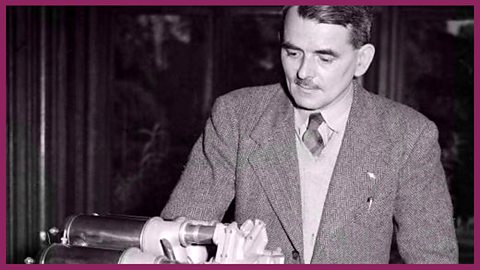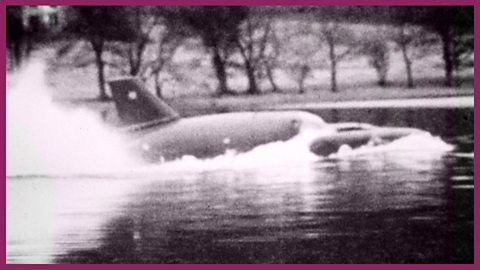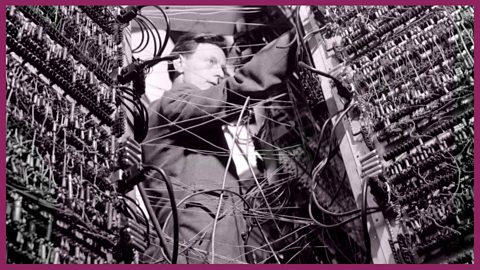Hello, В鶹№ЩНшКЧТіИлїЪ. We're now returning and we're going to do a speed run up to the very edge of the barrier of the speed of sound and now at the moment she's reading 450 miles an hour, and we're going down in a dive, in a dive from 10,000 feet, 11,000 feet, and we're building up the speed now to 500 indicated, and she's wobbling, she's wobbling and shivering, and my teeth are rattling, and that is the rattle that you're getting now, the barrier of the speed of sound, as we come up to it now, at an indicated height…an indicated speed of over 500 miles an hour which is very much faster really, at a height of 10,000 feet, which is well over 600 miles an hour really, we ran into the barrier of the speed of sound.
And in that run, corrected for height, we were actually doing between 81 and 82 per cent of the speed of sound or 618 miles an hour, the fastest recording yet made!
Sir Frank Whittle's work on the jet engine continued after World War 2 and was mirrored by a number of other companies around the world. Soon the race was on to build the first jet aircraft that could break the speed of sound - about 1,225 kph (761 mph) at sea level, but only 1,062 kph (660 mph) at 6,096 metres (20,000 feet).
In November 1945 the Gloster Meteor became the first aircraft to fly faster than 600 mph (965 kmph). In 1946 another British aircraft - the De Havilland Swallow - was also preparing for an attempt on the sound barrier. However, the milestone was finally reached in October 1947 by an American aircraft, the Bell X-1.
In this clip a reporter describes the experience of flying in a Gloster Meteor as it approaches the speed of sound…and although it turns out that the sound barrier has not in fact been broken it is, at least, the fastest recording then made!
The images show Gloster Meteor aircraft from the 1940s.
Play next
Sir Frank Whittle and the jet engine. video
Sir Frank Whittle describes the invention of the jet engine

The water speed record. video
The Campbells, Bluebird and the water speed record

A description of an early computer. video
A reporter describes the computer used to assist counting at the 1955 general election
